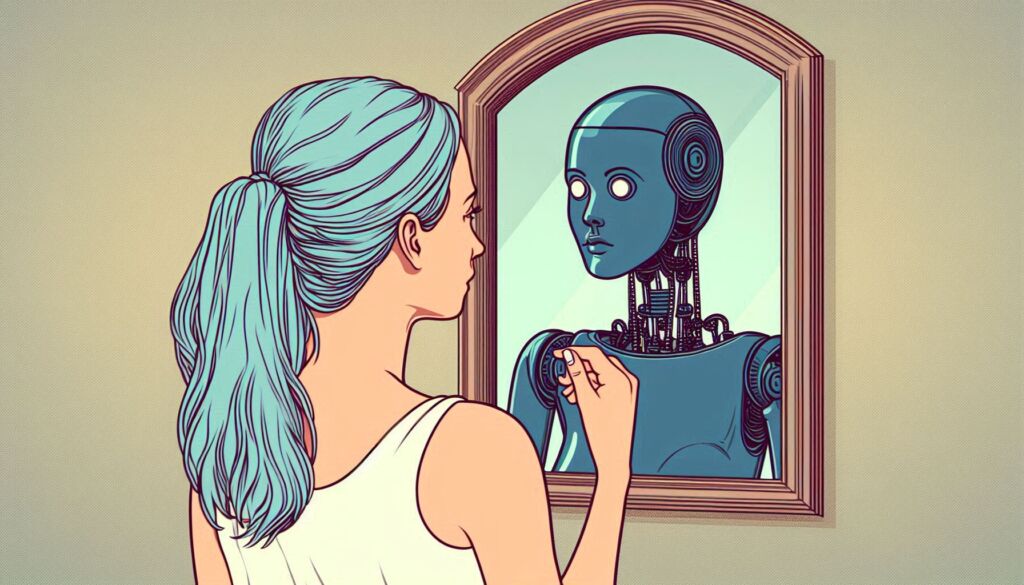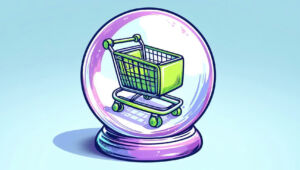AI in Ad Tech: Revolution, or Just Programmatic Rebranded?
by Shirley Marschall on 24th Apr 2025 in News

In her latest feature, ExchangeWire columnist Shirley Marschall looks at the similarities between the rise of AI and the heralding of programmatic advertising. Is history just repeating?
AI isn’t just entering advertising, it’s infiltrating it.
Take WPP, which revealed that it's already running 28,000 AI agents across their global operations (which, let’s be honest, sounds more like a Black Mirror season finale than a press release... ). From media planning to content creation, AI is moving far beyond where programmatic once lived.
The dream that never died, it just rebranded
Let’s go back in time a bit: It’s the mid-2000s, programmatic advertising began with a bold promise: automation would fix EVERYTHING.
Manual IOs would disappear.
Campaigns would buy themselves.
Targeting would become smarter.
Media would finally be measurable, scalable, and efficient.
Fast forward a decade, swap out “programmatic” for “AI,” and you’ve got half of this year’s Cannes deck.
“Accelerate efficiency.”
“Drive deeper insights.”
“Automate media and messaging at scale.”
It sounds familiar because it is. AI is promising the very same future programmatic once did.
This time, the hype is bigger though. When programmatic first arrived, it was pitched as a smarter way to buy media. A marketing solution.
AI, on the other hand, isn’t just being sold to marketers, it’s being pitched to every department, every company, every decision-maker. From legal, to finance, to HR, to operations - AI is the fix-it-all future.
The only difference between the programmatic hype cycle and today’s AI pitch? Scale.
We’re not just automating advertising this time. We’re automating everything. (This time for real!!)
Déjà vu, defined
Let’s play a quick game. Here’s a definition from the IAB’s official programmatic guide (with a tiny twist):
“AI advertising is the use of technology to buy and sell digital media, with the goal of delivering the right ad to the right person, at the right time, in the right place.”
Feels fresh, right?
Now here’s the actual quote:
“Programmatic advertising is the use of technology to buy and sell digital media, with the goal of delivering the right ad to the right person, at the right time, in the right place.”
Same words. Same promise. Different hype cycle.
Now let’s take a look at how AI is being sold today:
Now replace “AI” with “programmatic.”
Still works. Almost too well.
And that’s the point: we’ve heard this before.
AI isn’t new to ad tech, it just got a new accent
Let’s get something straight: AI, especially machine learning, has been part of programmatic for years.
- Bidding algorithms? ML
- Lookalike modelling? ML
- Dynamic creative optimisation? ML
What’s different now isn’t the capability, it’s the narrative.
We’re no longer whispering about “modelling.” We’re shouting about “intelligence.”
We’re not refining the system, we’re rebranding it as a revolution.
But ask yourself: if AI is going to fix what programmatic couldn’t… why does it sound so much like programmatic 2.0?
What’s different this time around? Programmatic was a system built by ad tech companies. AI is a wave that everyone wants in on.
Maybe it’s because the ecosystem learned from programmatic and now wants a bigger slice of the next disruption. Maybe it’s PR. Maybe it’s real.
HumanX CEO Stefan Weitz, nailed it in one line on a recent episode of the Stack Overflow podcast: “Is AI a bubble or a revolution? The answer is yes.”
The hype is massive. So are the expectations. But zoom in, and the reality gets messier.
Weitz further shared during the episode: "I’ve talked to one company that had 230 AI pilot projects running at the same time. Not kidding - 230. I asked how much they were spending. They said, ‘You don’t want to know.’"
This isn’t transformation, it’s exploration bordering on chaos.
And that chaos mirrors exactly what we saw during the rise of programmatic:
- Do everything.
- Automate everything.
- Optimise everything.
Until you don’t even know what you’re optimising for.
The risk of déjà vu
None of this is to say AI won’t outperform existing systems. It might.
GenAI could transform creative production.
Agentic AI could replace rule-based workflows.
Large language models could reshape planning, briefs, and optimisation logic.
But let’s not pretend we’re starting from scratch.
Because we’ve already made these mistakes once:
- Too much trust in opaque systems.
- Not enough accountability for outcomes.
- “Automation” sold as a feature without considering who it benefits most.
We went from programmatic personalisation to AI hyper-personalisation - only to find that most ads still feel generic, repetitive, or eerily misaligned. The tech got smarter. But the experience didn’t.
And the promise of “automation”? In many cases, it just meant scaling manual operations across more dashboards, more approvals, more tagging, more reporting.
We didn’t eliminate grunt work. We just made it harder to trace. The industry got high on dashboards and forgot about strategy.
We built tech that scaled inefficiency just as fast as it scaled reach.
We scaled everything… except clarity. And we called it progress
AI might be smarter. That doesn’t mean we are.
The real opportunity isn’t AI. It’s reflection.
If we’re going to reinvent the media supply chain, we need to stop re-running the same hype cycle with different buzzwords.
We don’t just need smarter systems, we need better thinking.
AI can power a better version of programmatic BUT only if we remember what went wrong the first time.
Otherwise, we’re not transforming advertising, we’re just recycling the original promises of programmatic.
Ad TechAIAutomationProgrammatic








Follow ExchangeWire